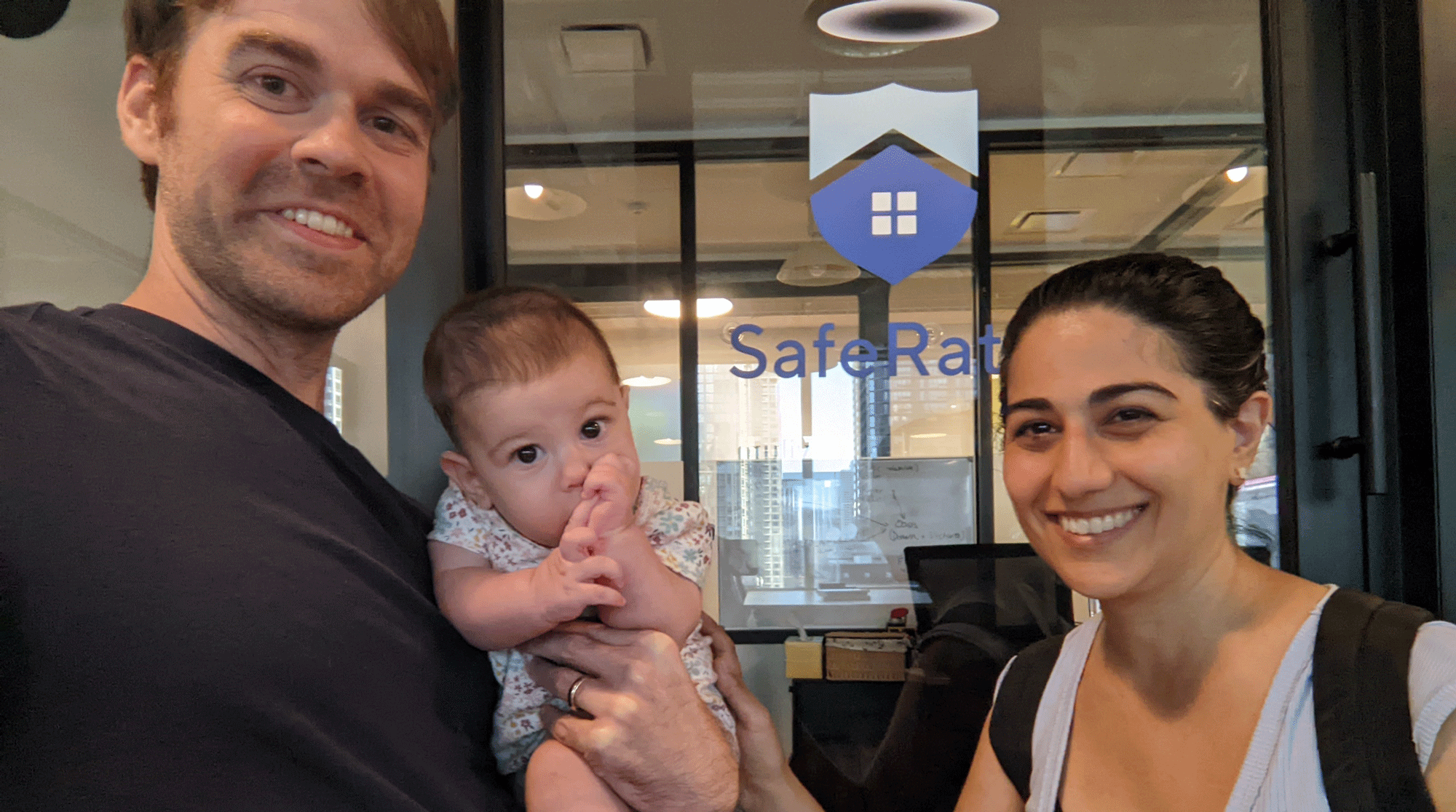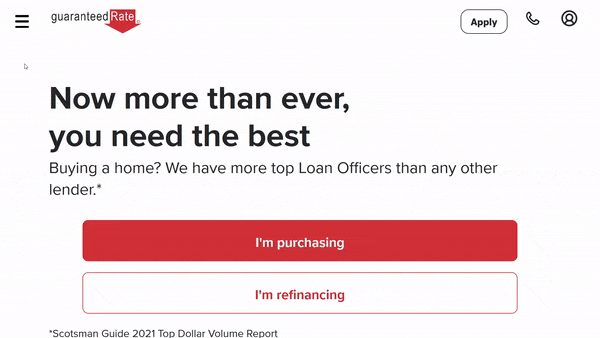How to Shop for a Mortgage Loan Online

My wife and I are both full-stack developers, licensed mortgage originators (NMLS #1658740 and NMLS #1658741) and the founders of Safe Rate, a startup mortgage lender. We hear more and more from our customers of their frustration in shopping for a mortgage loan online. This is NOT LIKE shopping for flights AT ALL.
That’s because online mortgage loan shoppers today are subjected to a sophisticated digital vortex of ads, teaser rates, and sponsored websites that are are meant to trip up even the savviest online shopper. So we’d like to share 5 basic tips on how to avoid some of the common consumer pitfalls in online mortgage shopping by using real life examples.

Tip #1: Interest rates are overrated
When it comes to mortgage loans, many consumers think about interest rates first. If I find the lowest interest rate, I’ve gotten the best deal, right?
If that’s your mentality, you can fall prey to a common marketing tactic. Mortgage loans have upfront costs and ongoing costs. An interest rate is an ongoing cost since the interest is paid for throughout the loan. But the interest rate can usually be reduced by spending more money upfront. Let’s dig in further to see how that works:
- The par interest rate is where there are $0 in upfront costs called points. It’s the number that we believe lenders should show to consumers if it’s available.
- You can receive an interest rate that is lower than the par rate if you pay more money upfront at closing. This upfront cost is called points. Points are paid to your lender and are separate from your down payment.
- You can also receive an interest rate that is higher than the par rate and receive money back at closing. That’s called a credit.
Most lenders are pretty savvy and know that many consumers anchor on getting the lowest interest rate, so they do not show you the par rate (#1), and instead assume you’ll pay in points to get a lower interest rate (#2). Let’s see an example of this in action.

Did you catch it? $6,065 in points!
What’s happening here is the lender is showing the interest rate is 5.500% by assuming that you’ll spend $6,065 upfront in points to get the rate. That’s no small chunk of change!
As part of our unique, Exact Rate pricing approach at Safe Rate, when we share a rate with a customer like on our rates page, we default to showing them the par rate ($0 in points/credits). There are special cases where the loan can only be obtained by paying for points, but in general, this is the exception rather than the norm.
Tip #2: Google may lead you ad-stray on your path to mortgage enlightenment
Most millennials like us start with Google to do our research. With Google though, you’ll quickly find yourself immersed in sponsored websites which are paid for by mortgage lenders. Check out this sequence of a recent Google search we did for the best mortgage lender and the accompanying Advertising Disclaimers on the highest ranked websites about how mortgage lenders pay them, how that influences which lenders are displayed, and even in some cases, the ratings those lenders receive.
That means that today’s lenders have highly sophisticated and expensive approaches to take you from your Google search term to the lender’s landing page. In fact:
- Many lenders pay between $1,000 and $2,000 in advertising to acquire a single customer ¹
- Even digital lenders acquire 9 out of 10 customers through some form of paid advertising or lead purchase ²
- The industry spends well over $1 billion on advertising each year ³
This matters to you because if the lender pays a lot of money to get your attention, guess who foots the bill? YOU. Now if that lender is also buying sports stadium names, tv ads, and radio ads, guess who’s paying for all of that? Again, YOU.
One method advertising-focused lenders use to cover their acquisition costs is to add additional fees to the loan like an application fee, processing fee, and an underwriting fee (imagine if a candy bar had a chocolate fee). In fact, you’ll see at the end of my video that one big lender estimates the average origination fee to be 0.5% — 1.0% of the loan amount ⁴. That’s between $1,500- $3,000 when you consider the average loan size!
To be clear, these process fees are entirely up to the lender and as a consumer, you should know that there are lenders like Safe Rate who do not charge process fees. Also, to highlight how advertising costs ultimately hurt consumers’ pocketbooks, we have a no advertising policy at Safe Rate. That means we can redirect the $2,000 our competitors spend on ads to our customers so that they can
- buy down their interest rate further OR
- help reduce closing costs by using towards items like homeowners insurance OR
- redeem for gift cards to help furnish the new home
You can see this is in practice on our rates page and claim your $2,000 in credits by joining Safe Rate for free.
Sometimes the path to mortgage enlightenment is that by expecting nothing, you may gain everything.
— Mortgage Buddha
Tip #3: Mortgage quote comparison websites will hit you up!
Comparison shopping should be easy on today’s internet, right? Isn’t there like an Expedia for mortgage loans or something?
Unfortunately, mortgage comparison shopping is not like comparison shopping for airline flights at all. Here’s me clicking through one-such website at 10x speed. We counted over 20 inputs that we had to submit before we even saw a “quote”, and we had to share personally identifiable information and create an account with the website just to see the pricing results.
For context, you can visit saferate.com/rates and see rates instantly without inputting any information and no requirement that you obtain an account.
So why does it take so many clicks to get results from these comparison sites? On these websites, you’re the product, and the lenders are the customers. Each question you answer makes you more valuable to the lenders who will buy your information. And once you’ve requested the quotes, your phone will be blowing up with calls, texts and emails from different mortgage lenders promising you the best rate. Hopefully you don't have WUPHF!
Tip #4: Your free credit score isn’t the credit score that will be used on a mortgage loan
There are also websites that offer a free credit score to help you find curated loan offers. It’s confusing for consumers because that free credit score is not THE credit score lenders will use to approve you for a mortgage loan in most cases.
The reason for the discrepancy is that there are actually different types of credit scores out there, and each of the three credit bureaus (Equifax, Experian and TransUnion) have their own implementation of each credit score. The two different scores are:
- VantageScore — offered through many financial service applications and websites as a free credit score. The websites providing VantageScore will typically provide the score from a single credit bureau.
- FICO — what the mortgage industry mostly runs on. Puts more emphasis on your payment history and amount of debt. For a mortgage loan, we will request your FICO score from all three credit bureaus and use the median credit score.
Also, if you have a co-borrower on your loan, the lender will use the lowest of your and your co-borrower’s median FICO score. So yes, I’ve seen married couples only use one person when the spouse’s credit score may be meaningfully lower (in sickness and in health but not on the mortgage loan).
While it’s not common, the reason some couples leave one person out is that the credit score is one of the most important factors in determining your mortgage rate. Be mentally prepared for the chance that the credit score you see on your banking app is not the one the lender shares with you when they work to qualify you for the loan. It can be really frustrating for you, but it’s actually not the lender’s fault in this case. It’s an industrywide phenomenon.
Tip #5: Speak directly with multiple mortgage providers and get a Loan Estimate from them
The best tactic as a consumer is to speak with multiple mortgage lenders knowing your needs, your wants and having a clear and accurate picture of your current financial situation. We encourage you to go ahead and speak with a lender instead of filling out a bunch of forms because you’ll want to get a sense of what this person and company is like before sharing your most sensitive data with them.
Here are things that are helpful to communicate upfront
- When you want to purchase your home
- Your monthly, pre-tax income
- How much of a down-payment you have
- The price of the house you’re looking to purchase
- Your monthly debt payments (like auto loan, student loan)
- If you’re self-employed or run your own business, share that
- Whether you’ve had any significant credit issues in the past like delinquencies or bankruptcies
These are some questions that you can use to understand your lender
- What mortgage loan product would you recommend for me? Why?
- What will the mortgage process look like if I choose to work with you?
- Will I work with you throughout the entire process, or will I be handed off to someone else?
- How long does it take to get a loan approved for closing?
- How can I obtain an accurate Loan Estimate from you?

The Loan Estimate (LE) is a much better alternative to a “quote.” It is regulated by a federal government agency, the Consumer Financial Protection Bureau (CFPB), and lenders are prevented from meaningfully understating any fees that they have control over on an LE. In fact, if we’re wrong, we have to cover the difference (thanks Obama!). The best part is that with the LE, you’ll also have an itemization of individual fees so that you can determine both your upfront and ongoing costs that we discussed in Tip #1. For comparing lenders, you’ll want to focus on
- Ongoing costs: Principal and interest monthly payment on Page 1
- Ongoing costs: Mortgage insurance monthly payment on Page 1
- Upfront costs: All payments in Box A on Page 2
- Upfront costs: All payments in Box B on Page 2
There are many other costs on the LE like homeowners insurance, property taxes, escrow, and title insurance. Your lender does not set these costs generally speaking, so while you want to double check differences between lenders, the key items we highlighted above will usually best help you understand your upfront and ongoing costs as you comparison shop across lenders. You can check out the Loan Estimate Explainer from the CFPB for additional guidance on reading the LE.
And remember, no matter which lender you choose, you’re about to go on a 2–4 week journey with them to get your loan fully approved. A mortgage loan is as much of a process as it is a product, and you want a high level of trust and rapport with your lender. That’s why we encourage speaking with multiple lenders to also get a “vibe” of what it will be like to speak with this person for the next month. If someone gives you a bad vibe, don’t work with them! Even if their pricing is better, you may be able to share their Loan Estimate with a lender you like and get a better deal. It never hurts to ask!
You can try reaching out to each of one of the three types of mortgage providers.
Your bank
- Pros: Can have lower rates if you’re a higher net worth client and seeking a jumbo loan. More likely to service your loan after closing.
- Cons: May be slower to close on the loan and have upfront processing costs. May have clunkier technology or require more documentation or even outsource operations entirely.
- Most used companies: Wells Fargo, JPMorgan Chase, US Bank, Ally
A non-bank lender
- Pros: Excel in process efficiency. Close loans quickly. Tend to have better technology.
- Cons: Not always patient, especially if you’re early on in the process. Costs may be higher if advertising is heavily used to acquire customers. Less likely to service your loan after closing.
- Most used companies: Rocket Mortgage, Guaranteed Rate, Better
A mortgage broker
- Pros: Tend to be more relationship-driven. Costs depend on operational efficiency of brokerage.
- Cons: Technology can be clunky and outdated. Quality of the experience is really dependent on the individual broker you’re working with.
- How to find a local broker: Check out FindAMortgageBroker.com
Still seeking advice?
Finally, if you’re still looking for a knowledgeable perspective, you can try our free, no-hassle, no-obligation Mortgage Coffee Chat offering at Safe Rate. You can book a 15-minute call with us and ask any questions you may have, whether you’re planning to get a loan in two years, two months, or two days. There’s no requirement to use Safe Rate and we will not reach out to you after the coffee chat unless we have your explicit permission to do so. You can book a time today at saferate.com/chat.

Thanks for reading, and happy home (and mortgage) shopping!
Dylan & Shima
